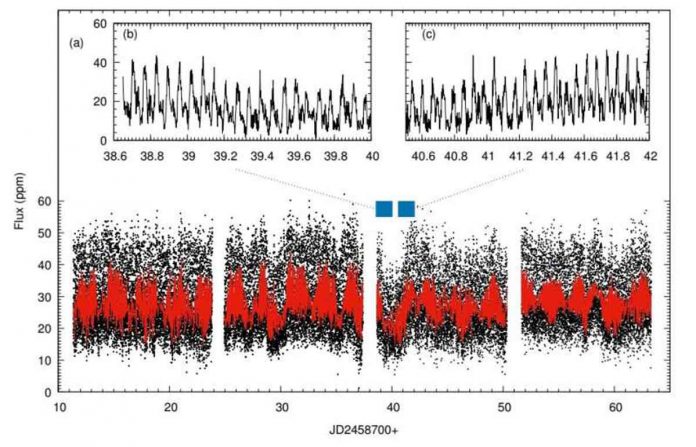German astronomers examined V496 UMa, a highly variable polar, using data from ESA’s XMM-Newton spacecraft and NASA’s TESS telescope. The study’s findings, which were published on arXiv.org on May 20, provide more insight into the object’s properties and nature.
CVs are binary star systems in which one star is a white dwarf and the other is a normal star. They brighten up by a big factor seldom, then dim back down to a quiescent state. Polars are a type of cataclysmic variable that differs from others in that their white dwarfs have an extremely strong magnetic field.
V496 UMa,(also known as MASTER OT J132104.04+560957.8) was first discovered as a CV in 2012 when its brightness varied by around 2 mag in 30 minutes. It is located 2,470 light years away from Earth. This source was verified to be a non-eclipsing polar after more observations. This system’s orbital light curve has a double peaked structure, with the second hump’s amplitude being highly changeable.
Now, Samet Ok and Axel Schwope of Germany’s Leibniz Institute for Astrophysics Potsdam have opted to search through archival data from the XMM-Newton and TESS spacecraft in the hopes of learning more about the features of this very changeable pole.
The researchers added, “This study explores the thermal, temporal, and geometric behaviour of V496 UMa in the X-ray and optical regime.”
The study confirmed that the optical light curve of V496 UMa has a highly varied behaviour. Two alternating humps of varying brightness characterize the light curve shape. The orbital period, which is around 91.06 minutes, demonstrates a periodic variability in the system.
Furthermore, V496 UMa’s X-ray light curve is double-humped and has a noticeable drop. In X-rays, the source was also discovered to have a multi-temperature spectrum. At soft X-ray energy, it has a strong blackbody emission, which is typical of polar.
The spectral energy distribution (SED) of V496 UMa also revealed two separate mass accretion states: an active state at various brightness levels and an inactive or low state. The results demonstrate that in a high state, the bolometric X-ray luminosity of this system corresponds to the average X-ray luminosity of the so-called intermediate polars (IPs).
The researchers found that the system most likely consists of a main-sequence donor star of spectral type M5.0 and a white dwarf with a mass of about 0.8 solar masses and an effective temperature of less than 10,000 K after attempting to identify the fundamental parameters of V496 UMa.
“Our attempt to determine the secondary’s spectral type was based on Knigge et alempirical .’s relationship (2011). The spectrum energy distribution in the low accretion stage was well represented by a main-sequence star of the M5.0 spectral type, a 0.8 solar mass white dwarf, and a temperature of 10,000 K “The paper’s authors came to a conclusion.

